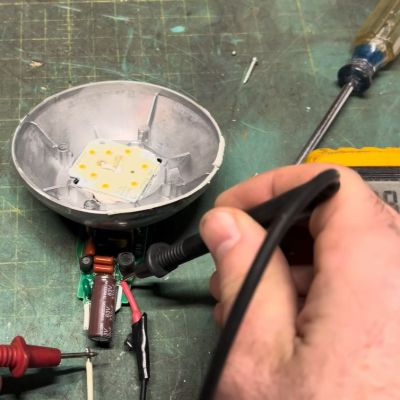
We have probably all seen the marketing blurbs on packaging and elsewhere promoting the amazing lifespan of LED lighting solutions. Theoretically you should be able to install a LED bulb in a fixture that used to hold that incandescent lightbulb which had to be replaced annually and have it last a decade or longer. Yet we seem to replace these LED bulbs much more often than that, with them suffering a range of issues. To get to the root cause of this, [The Doubtful Technician] decided to perform an autopsy on a range of dead lightbulbs which he got from a variety of sources and brands.
One lamp is an Amazon-bought one by a seller who seems to have vanished, but was promised over 3 years of constant use. Other than the fun blinding of oneself while testing, this one was easy to diagnose, with a dodgy solder joint on a resistor in a MELF package. The next one from Lowes was very dim, and required popping open with some gentle force, which revealed as likely culprit a shorted SMD resistor. Finally a more substantial (i.e. heavier) bulb was tested which had survived about 7 years in the basement until it and its siblings began to suddenly die. Some might consider this the normal lifespan, but what really failed in them?
The electronics in this last bulb were the most impressive, with a full switch mode power supply (SMPS) that appears to have suffered a failure. Ultimately the pattern with these three bulbs was that while the LEDs themselves were still fine, it were things like the soldering joints and singular components on the LED driver PCB that had failed. Without an easy way to repair these issues, and with merely opening the average LED lightbulb being rather destructive, this seems like another area where what should be easy repairs are in fact not, and more e-waste is created.

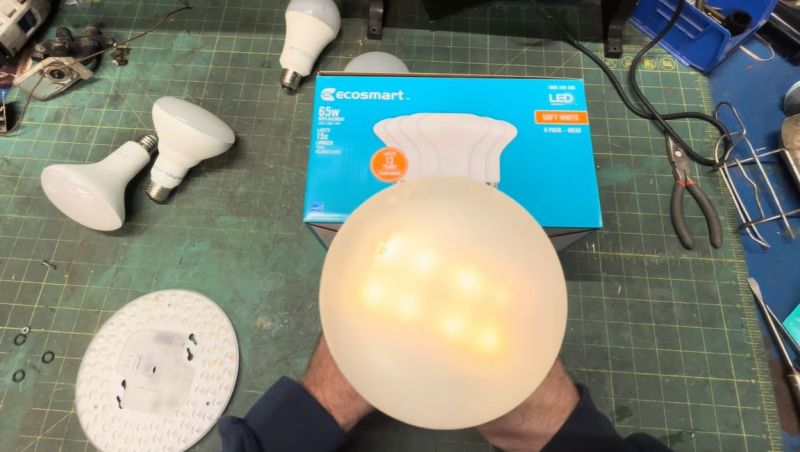






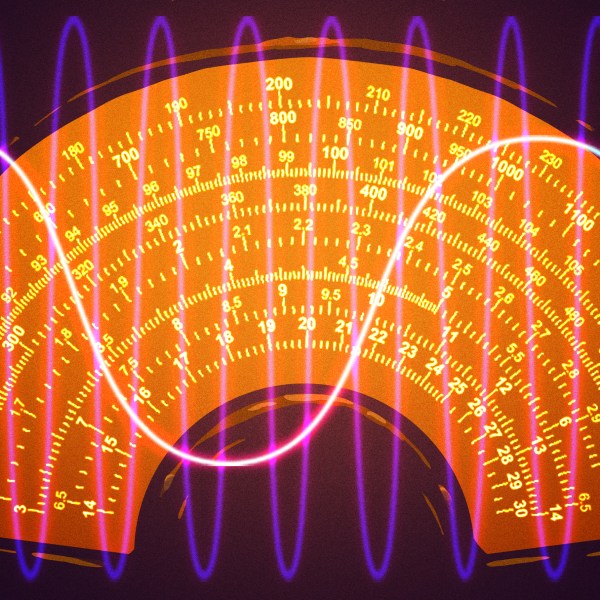



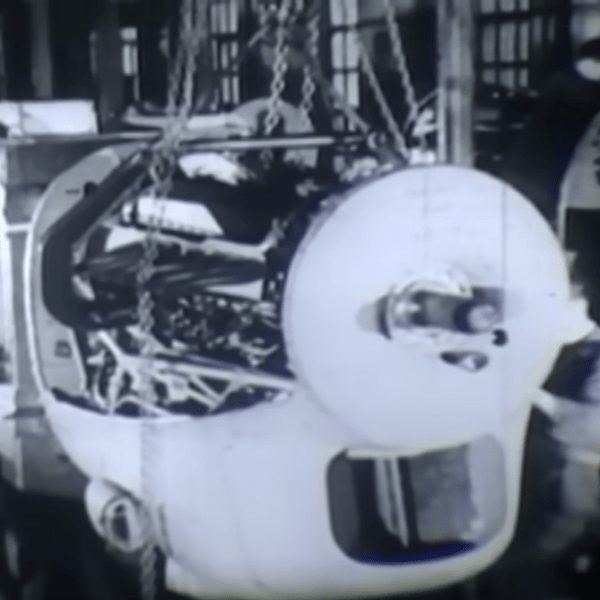
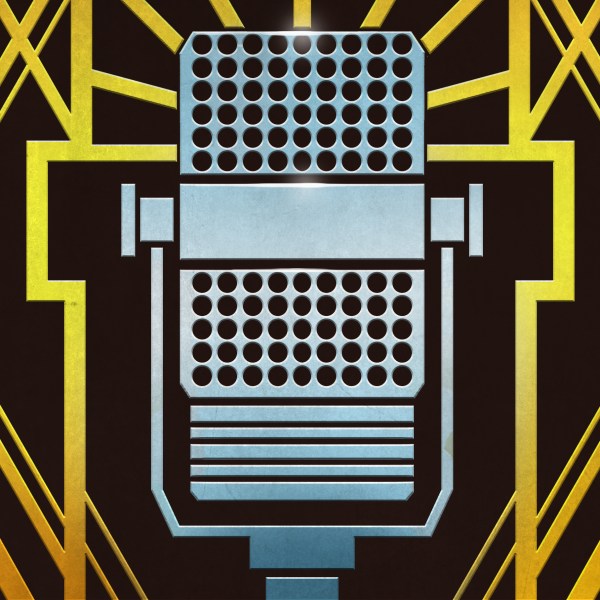

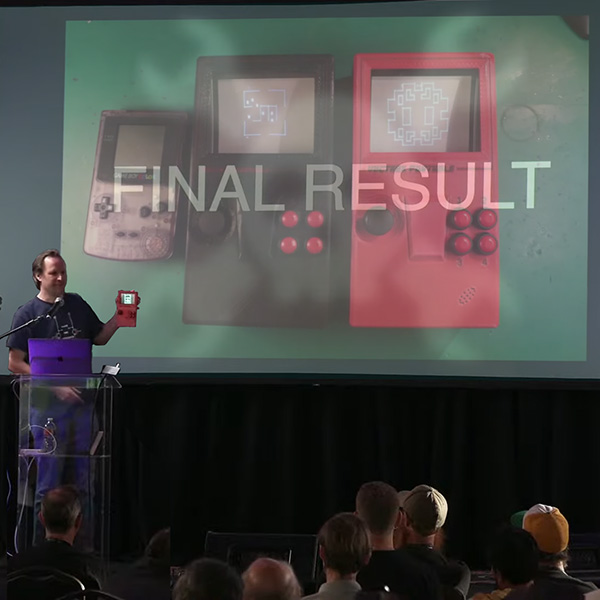

I just get the great value brand walmart bulbs, I have had some that last 3 or 4 years in the harsh environment of steamy bathrooms in tiny fixtures all the way up to the one’s on my front porch that I installed when we moved in … 9 years ago
Definitely noticed the not quite up to expectations of LED bulbs, but I find I’m replacing them a lot less than the prior bulbs, and effectively I almost feel like I’m ahead.
Plus, I’m not sure what exactly is causing it but I have to either keep a 60W incandescent lamp around or I have to fire 3-4 times as many “60W” LED bulbs up to be able to read a paperback. They show pretty close to the same curves in visible light spectrum in the testing I’ve seen but there is something most certainly different and wrong happening.
in 2017 i bought some Philips Hue lights and they’ve been great. none have failed so far. they are very expensive, of course. At the shop, I installed 18W ceiling mount lamps. They don’t seem to last more than a year. The amount of trash I generate with these stupid lamps is obscene. LEDs were supposed to last for 50K hours and nowadays the only way to get that, it seems, is spending $50+ on a bulb.
I wouldn’t mind paying $50 on a “forever bulb” but the trend seems to be going towards “specialty lamps” instead of standard E27 or E14 lamps. I refuse to buy such lamps. For the yard I made sure I got fixtures with standard bulbs. They had nicer-looking ones that don’t have a hotspot inside but are uniform. Forget that. In 2 or 3 years when they start failing, good luck finding a replacement that doesn’t involve changing all of them because that model is no longer made.
LEDs can last a long time. The stuff that I’ve built lasts until the LEDs actually wear out and get dim after many years of use. The trick is to use enough heatsinking that they stay cool and not run them at their maximum current.
The LED lights that you can buy all run hot enough that you can’t touch them. The thermal cycling ends up breaking the bond wires and you end up with a light that either suddenly burns out or starts flashing.
Sometimes I discover myself wandering about my ideal LED lamp with a custom made water based cooling system, probably made of copper or aluminum, using the same yellow liquid cars use to cool the engine, with internal path ways for each LED, or maybe a similar system to that laser epilators use to cool the lamp/diode. and some kind of logic to control temperature levels and a very well designed PMPS with all the elements needed to protect the entrance from surges…and a simple ON/OFF swith (not that smart things connecting to some uknown server)
But then I remember I don’t have a CNC, I don’t know 3D modeling and I have no time to design the PCB :) so I go to my local store and buy an el cheapo one.
sooo, it would be an interesting project, it would last forever, but spending a ton to replace a bulb…
If I had a CNC mill, I would definitely make some water blocks and play around with some very high power, water cooled LEDs.
Water cooling is certainly overkill for room lighting though. Lots of LEDs spread out on an aluminum strip or sheet works great for that and stays cool.
Thing is, I don’t keep records on replacement light bulbs… But empirically it seems I am changing out light bulbs way less often than I used to. In fact I don’t remember the last one I changed out. So we must be ahead of the game :)
The contractor packs from your local Lowes/Home Depot last for about 2-2.5 years of constant burning. Not even half that if you switch them on and off regularly though.
Before installing any bulb, wipe the bulb clean with a dry paper towel or somesuch.
Then I use a black sharpy (big tip) and write the date of install on the bulb.
If you want to improve bulb life, (at least with incandescents) use dimmers instead of the common flip /snap switches.
Helps control that inrush current by using a dimmer.
Haven’t gotten deep enough into the LED stuff, yet, to see how the dimmers affect their life.
But I’ve got a number incandescent still going almost 20 years in some locations.
IKEA Tradfri bulbs are fine. And remote controllable for great justice.
I’ve had two of those die on me in 6 years: One, the LEDs or driver went, and I managed to convince Ikea to swap it themselves. The other went just this year, and it appears to be the radio in it – the bulb still lights up fine, but color temperature or brightness can no longer be controlled.
Ikea’s bulbs are no better than what you can find elsewhere, unfortunately.
Wow. Two! I have 23 in my lounge. I hope they last. /s
I have 8 of them deployed myself – two out of 8 in six years doesn’t speak for great chances of reliability. :(
More liberal “green” lies… everyone smart knew this would be the result.
Nuf said…
I would actually expect that it is the race to the bottom for pricing, your average consume sees two bulbs in the store – one for $4- and the other for $3- most will go for the $3- one – so many manufactures just keep making things cheaper and thus the less reliable cheaper wins the race
I have so many dead LED bulbs that are less than 5 years old, a few downright defective and died after a year of frequent use. But I have a half dozen CFLs that are still kicking despite all of them being 10+ years old. The plastic waste from cheap LEDs has just been phenomenally stupid, and it’s a technology that was expensive and too dim that got bright, cheaper, and less reliable as LEDs became more mainstream.
I don’t think we’ve bought many LED actual bulbs, but tubes (like fluorescent tubes), yes, and while the ones in our kitchen have lasted many years now, ones I had in the bathroom probably lasted less than a hundred hours. One I had in my office didn’t do much better. The problem was much worse with CFLs. In fact, our son used to do maintenance at a school, and he got a box of CFLs that were supposed to last 15,000 hours, and he always wrote the date on lights when he installed them, and he know how many hours a day the various ones were on, and half the box didn’t even make it to 250 hours.
Part of the problem is that the E27 form factor is not very well suited for LED’s. Mimicking the old incandescent lamps leaves very little room for electronics. Combine that with the cheapest electronics that sort of make it work, and the LED’s running hot, and you’ve got a recipe for a short lifespan.
LED’s can do over 200lm/Watt, but they only do that at low to moderate currents. Most often the LED’s are run at a higher current, and the result is that they can make a LED lamp with the same “wattage” cheaper, but most of it is then converted to heat. I make most of my LED armatures myself. I start with an external low voltage power supply, add some bare LED’s and some circuitry to run them at a current that they do not get too hot.
Making nice LED lights can be fun. You can use a leftover power supply, or buy a (decent) ready made one, Add some LEDs and design an armature together with your spouse or friend. LED strips tend to be bad. COB LEDs on aluminimum panels are better. Don’t trust the power rating of the sellers, but determine them yourself. For example I bought 12V 10W led panels, and when powering them from my bench power supply, they run quite cool up to 6W, and above that they quite suddenly start getting hot. Both bad for efficiency, and for LED longevity.
It’s also getting more common for LED’s in lamps not being replaceable anymore. If the LED or the power supply goes, you have to replace the whole armature (or start hacking) When you build your own armature, make sure to buy some extra LED’s of the same model, so even if they go, you can easily replace them.
And COB LED panels can be bought in many sizes, from very small to very long such as the LED strips used in TV’s.
Do you have a source of good LEDs with a high CRI? All the ones I can buy in stores give a horribly artifical light that’s just bot the same as incandescent bulbs :(
I’ve started writing the date of purchase and date of installation on all my bulbs, and keeping the receipt with the box. That way I can hold them to their 5-year guarantee! Eventually they’ll start making better bulbs (or lower their guarantee), or I’ll get free bulbs for life…
none of the six LED can spotlights in the ceiling of my kitchen have ever been replaced, and they date to the very first generation of LED lighting, back when you had to buy LED bulbs online from specialty stores. when was that, 2010 or so? they were about $20 each at the time.
I have a bucket of dead tuya bulbs. I figured I’d give em a go in the string lights for the Halloween party before tossing em. I shocked the crap out of myself with one of them (with an audience) but the shock turned the no longer wifi bulb red. I call it a win.